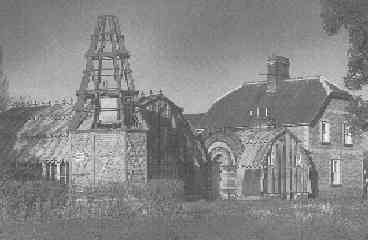Final Note
The Pump Rooms were totally refurbished in 1998/9 with funding from various sources, including English Heritage, Advantage West Midlands, the European Regional Development Fund, Malvern Hills and Leominster District Councils and Teme Rural Challenge.
The major problem that the architects responsible for the repair had to deal with was a major sag of one of the portal frames over the conservatory glass. It appears to have been due to bad design. Each roof structure now has a steel member going down to a concrete block cast at foundation level.
There was also a big problem with regalvanising the wrought iron sheets. After being regalvanised they buckled and would not fit the structure. This was solved by sending the sheets to specialist car body firm in the Medway who were used to dealing with very thin steel.
Another big problem was to ensure that the roof was watertight. The roof was an extremely complicated shape, there were valleys and areas of flat roof and all sorts of unusual angles between one part of the building and another. It never was watertight originally, but hopefully, all the problems have now been solved.
All the wrought iron sheets now have spaces between them to try and stop any rust problems recurring and it has been fully insulated.
A lot of the brick work was only 1/2brick thick and so would always have been rather wobbly. This has all been straightened, but still keeping the exterior as it was built in 1862. It was probably originally designed for a life of only 25 years, but has lasted 137 years.
This latest refurbishment has brought the building up to modern day standards. It is now has insulation, damp barriers are in place and it is weatherproofed.
When the interior is finished it will be a building suitable for a wide variety of uses, and one the Town can be proud of. |





